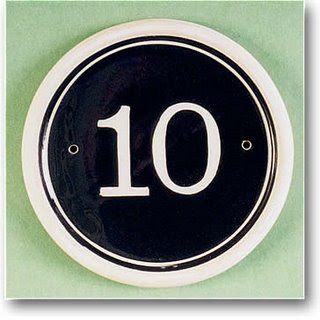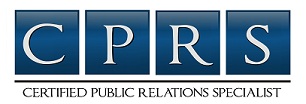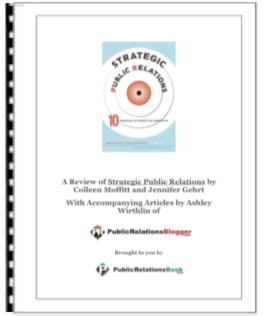Showing posts with label Creating a Public Relations Plan. Show all posts
Showing posts with label Creating a Public Relations Plan. Show all posts
________________________________________________________________________
 When it comes time for you to create your own marketing, business, and public relations plans, there are a few things you can take to heart. Whether you're just starting out, or just now getting around to creating these resources, these plans will be the blueprints for your future success.
When it comes time for you to create your own marketing, business, and public relations plans, there are a few things you can take to heart. Whether you're just starting out, or just now getting around to creating these resources, these plans will be the blueprints for your future success.
5 Tips for Creating Successful Marketing/Business & Public Relations Plans:
5 Tips for Creating Successful Marketing/Business & Public Relations Plans
________________________________________
 When it comes time for you to create your own marketing, business, and public relations plans, there are a few things you can take to heart. Whether you're just starting out, or just now getting around to creating these resources, these plans will be the blueprints for your future success.
When it comes time for you to create your own marketing, business, and public relations plans, there are a few things you can take to heart. Whether you're just starting out, or just now getting around to creating these resources, these plans will be the blueprints for your future success.5 Tips for Creating Successful Marketing/Business & Public Relations Plans:
- Be Smart. Though all three plans will have a different "formal" structure to them, they should all encompass similar items, and be created in a similar fashion: an educated, researched, and thoughtful one. When you create your plan, do so with care. This is for you, and your success, so don't see it as a chore. Much like driving to an unknown location, a map (your plan) can be helpful in finding and directing you to your desired destination, whatever it may be. This process will, of course, also help you to establish if your desired destination is completely unattainable and far-fetched, but don't be afraid to be ambitious.
- Be S.M.A.R.T. You may have read this online elsewhere, and even earlier on this blog, but it's worth repeating. When it comes time to create your objectives and strategies, really employ this point of view. (Avoiding this step will make the plan useless in and of itself, so if you don't plan on really taking the time to develop and create you strategies and tactics, I would highly recommend you hire a professional.) This acronym stands for Specific, Measurable, Achievable, Realistic, and Time Bound. This follows from #1, in that you can create goals that are semi-lofty and hard to reach, but still within reach if you can find the right items to leverage yourself. Be aware of your limitations, and those of the universe, when creating your plans. Also be respectful of others that you plan depends on.
- Be Comprehensive. Take a look at all areas of the plan that need to be created. When you create a plan for the first time, you need to go through the motions to ensure your plan is built for success. For example, if you create your budget first, you may find most of what you want to do in your plan far surpassing what you'd estimated. Similarly, if you create tactics without first creating strategies, you're drawing your own directions on your map that may or may not lead to your destination. (It's like following traffic, not knowing why, and hoping they're going where you need to go; try to avoid that.)
- Get Feedback. If you need assistance in getting these created, then get some! There is a plethora of advice online, and even more available persons to come to your rescue! Find someone who knows PR and marketing; the two are very similar online, and when creating a marketing/business plan and PR plan, their advice can come in handy.
- Maintain and Manage. There's nothing more detrimental to your success than leaving your PR/Marketing plans to fend for themselves. Coming back around to the car analogy, this is like beginning your journey and never filling the tank or checking the map to ensure you are still headed in the right direction. If you've gone through the trouble of creating your plan, take the time to monitor what's happening with the tactics/activities you've created. This can be most helpful when it comes time to create a new plan or revamp your existing one. Much like a vehicle, these plans do need to be replaced or repaired. Also similar to choosing a vehicle based on your needs, your PR plan can change dramatically based upon your goals and needs presently.
________________________________________________________________________

Creating a public relations plan takes time, knowledge, and understanding of your company or client needs and wants. Here are some steps to ensure you capture those wants and needs in the plan creation process and that you create a plan that is relevant and useful to your company or client.
10 Steps to Creating a Successful Public Relations Plan
________________________________________

Creating a public relations plan takes time, knowledge, and understanding of your company or client needs and wants. Here are some steps to ensure you capture those wants and needs in the plan creation process and that you create a plan that is relevant and useful to your company or client.
- Know your company's or client's current situation. This is essential to knowing where the company now stands, where the company is able to go, what the company's market/industry looks like, and what direction the company is headed. This helps to put things in perspective.
- Know your resources. This can be a part of the first step, as it is a part of the situational analysis needed to understand where your company or client currently stands. This can help you better build your tactics and strategies while considering the budget, time, and other resource limitations the company or client may have.
- Know your objectives and goals. Also essential to the PR plan having success, you must know where the company hopes to go. Like driving with no directions, a PR plan with no goals or objectives is an aimless action with no knowledge of what could come, or even what results are desired. Be sure that the PR plan's objectives are in line with the rest of the company's overall objectives, and ensure that they are clear to all involved.
- Know and define your target audience(s). This means that you've defined your target buyer audiences and target media audiences. Each audience will need a different message and a different approach. Knowing these audiences will help you to frame your strategies and tactics so that you can effectively reach the people you hope to reach.
- List messages and strategies you will use to reach the target audiences you defined. These should be in line with the goals and objectives listed earlier; if they are not, the plan is already off to a somewhat bad start. Know that your strategies and messages also need to relate to one another, otherwise there is some disconnect happening that needs to be addressed.
- Define the tactics you will use to make the strategies you've listed a reality. These tactics will take the messages and strategies listed and make them happen. If, for example, a strategy is to enhance a company's brand awareness, tactics could include community outreach, social media use, press conferences, etc. There first needs to be a strategy defined before tactics can be addressed and assigned to a message.
- Create a time-line for implementation. This needs to be realistic but also challenging. Remember that there should be no lapses in the PR plan where press releases are being sent out, events are taking place, or media are being engaged. There needs to be constant reminder to the public that the company is alive and well, and that can be done with constant information being sent out.
- Delegate obligations and responsibilities to your team or your client's team to ensure all parts of the PR plan are completed. This helps to ensure that everyone is on board and that everyone knows their own responsibilities and duties. This is crucial to seeing the PR plan come to fruition. This step should be done with everyone involved so that no one feels over-burdened, left out, or given too much responsibility. This can also help to give everyone the feeling of responsibility since the plan was created with everyone together and not just one person's say.
- Create measurements of results/ success. To know if your plan is effective, create measurements and benchmarks for the tactics you implement. This is a place for the PR team to gauge the success of the plan and to see if goals were realistic. Creating measurements can also help to show what could have been done with the expertise and estimations of a PR firm or team.
- Review the plan after implementation and conclusion of the plan. This is the time when all who helped to create and carry-out the plan can come together and share their thoughts on what went well, what didn't go so well, and what could be done differently in the future. This needs to be done to ensure that future plans have a chance of being successful. This step can help to encourage group members to continue working for the company's success by giving everyone a chance to talk and contribute to the next planing.
Subscribe to:
Posts (Atom)





